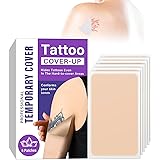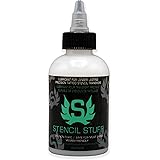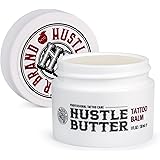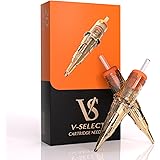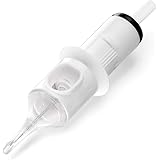Ready to master the graceful curves and strong lines of the letter ‘M’ in calligraphy? The video above offers a silent, visual demonstration of the ‘M’ calligraphy style, showcasing the elegant movement of pen on paper. While watching is a fantastic way to grasp the visual flow, understanding the foundational principles and techniques behind each stroke can elevate your practice significantly. Learning the letter ‘M’ in calligraphy is more than just drawing a shape; it’s about understanding pressure, consistency, and rhythm.
This detailed guide will complement the video, breaking down the art of creating a beautiful ‘M’ in various calligraphy styles. We will explore the essential tools, fundamental strokes, and practical tips to help you achieve a polished and professional look. Whether you are a complete beginner or looking to refine your existing skills, mastering the ‘M’ is a crucial step in your calligraphy journey.
Understanding the Foundation of the ‘M’ Calligraphy Style
The letter ‘M’ is a cornerstone in many calligraphy styles, from traditional Copperplate to modern brush lettering. It’s a fantastic letter to practice because it incorporates several fundamental strokes you’ll use repeatedly. Breaking down the ‘M’ allows you to focus on individual components, ensuring each part is executed with precision.
The ‘M’ typically involves a series of downstrokes and compound curves. Understanding how these basic elements connect is key to forming a harmonious letter. Different calligraphy styles will interpret the ‘M’ with varying degrees of flourish, slant, and thickness. However, the core structure remains consistent across most scripts.
Breaking Down the Letter M in Calligraphy
Before you even pick up your pen, visualize the ‘M’ as a series of connected shapes. For pointed pen styles, think of thin upstrokes and thick downstrokes. Brush lettering uses similar principles, where lighter pressure creates thin lines and heavier pressure creates thick ones. Each part contributes to the overall aesthetic of your ‘M’ calligraphy style.
Consider the entry stroke, often a delicate upstroke. Next, you have the first downstroke, which typically carries significant weight. A compound curve then leads into the second downstroke, followed by another curve and the final downstroke or exit stroke. Paying attention to these transitions is what truly defines a well-executed letter ‘M’.
Essential Tools for Mastering Your ‘M’
Having the right equipment makes a significant difference in your calligraphy practice. It helps you achieve cleaner lines and better ink flow, reducing frustration. While the video showcases the fluid motion, understanding the tools behind it is crucial for replicating the results.
For pointed pen calligraphy, you’ll need a nib holder, a pointed nib (like a Nikko G or Brause EF66), and smooth ink. For brush lettering, various brush pens are available, offering different tip sizes and flexibility. Also, always use smooth paper to prevent ink bleeding and nib catching. This ensures your ‘M’ calligraphy style develops beautifully.
Nibs and Brush Pens for Calligraphy
Nibs come in many varieties, each offering unique flexibility and line variation. Beginner-friendly nibs are generally less flexible, providing more control. Brush pens, on the other hand, vary in tip stiffness and size, allowing for broad or fine strokes. Experimenting with different tools helps you discover what feels most comfortable for your hand and your desired ‘M’ calligraphy style.
For pointed pen work, a good quality ink is essential. India ink or sumi ink are popular choices for their rich color and smooth flow. When using brush pens, choose water-based markers designed for lettering, as they glide easily across paper. The right tools enhance your ability to control pressure and achieve consistent lines.
Understanding Basic Strokes for the ‘M’ Calligraphy Style
Every complex letter is built from simple strokes. The ‘M’ in calligraphy is no exception. Mastering these fundamental movements ensures your letters are consistent and visually appealing. These basic strokes are the building blocks for countless other letters too.
Practice these individual strokes before attempting the full letter. This builds muscle memory and improves control over your pen or brush. Focus on the angle of your tool and the pressure you apply. This attention to detail will greatly enhance your overall ‘M’ calligraphy style.
Key Strokes for a Perfect ‘M’
-
Upstrokes: These are delicate, thin lines created with minimal pressure as you move your pen upwards. Think of them as connecting lines. They should be consistently light and smooth.
-
Downstrokes: These are thick, strong lines created by applying pressure as you move your pen downwards. The amount of pressure dictates the thickness of the line. Consistency here is vital for a balanced letter.
-
Compound Curves: This stroke combines an upstroke and a downstroke in one fluid motion, typically forming a gentle curve. It’s often used to transition from one part of a letter to another, such as the arch in the ‘M’.
By practicing these individually, you develop the control necessary for a beautiful ‘M’ calligraphy style. Remember, the contrast between the thin upstrokes and thick downstrokes is what gives calligraphy its distinctive elegance.
Step-by-Step Guide to the ‘M’ Calligraphy Style
Let’s break down how to construct the letter ‘M’ using a common calligraphy approach. This method applies to both pointed pen and brush lettering, focusing on the pressure changes. Follow these steps slowly and deliberately, focusing on each movement.
Always begin by setting up your practice space. Ensure you have good lighting and a comfortable posture. This helps maintain a steady hand and reduces fatigue during your practice sessions. Mastering the ‘M’ calligraphy style takes patience and consistent effort.
Constructing Your Calligraphy ‘M’
-
The Entry Stroke and First Downstroke: Begin with a light, thin upstroke leading into the first vertical stem. Then, transition into a heavy, thick downstroke. Ensure this downstroke is straight and consistent in width. Lift your pen at the bottom.
-
The First Compound Curve and Second Downstroke: Start a new stroke with a light upstroke, curving gently towards the right to form the top of the first arch. As you begin to move downwards, gradually apply pressure to create a thick downstroke. This forms the middle leg of the ‘M’. Again, lift your pen at the bottom.
-
The Second Compound Curve and Final Downstroke: Similar to the previous step, initiate with a light upstroke, curving towards the right to form the second arch. Apply pressure for the final thick downstroke. This completes the body of the ‘M’.
Focus on maintaining a consistent slant for all your downstrokes. The spacing between the vertical stems should also be uniform. These details contribute significantly to the overall aesthetic of your ‘M’ calligraphy style.
Common Challenges and How to Overcome Them
Even experienced calligraphers encounter challenges. Recognizing common issues and knowing how to address them is part of the learning process. Don’t get discouraged if your first few ‘M’s aren’t perfect; practice makes progress.
One common issue is inconsistent pressure, leading to uneven thick and thin lines. Another is wobbly lines, indicating a lack of control or an unsteady hand. Addressing these issues systematically will improve your ‘M’ calligraphy style and your overall lettering.
Troubleshooting Your Calligraphy ‘M’
-
Inconsistent Pressure: Practice pressure drills focusing solely on thick and thin lines. Start with a thin upstroke, press down for a thick downstroke, and release for a thin upstroke. Repeat this motion until it becomes second nature.
-
Wobbly Lines: Slow down. Rushing often leads to uneven strokes. Also, ensure your arm, not just your fingers, is guiding the pen. Good posture and a firm grip (but not too tight) help stabilize your hand.
-
Incorrect Spacing: Use guidelines. Many practice sheets have horizontal and vertical guidelines to help with spacing and slant. Consistent spacing creates a more balanced and professional look for your ‘M’ calligraphy style.
-
Ink Flow Issues: If your ink is skipping, your nib might not be properly prepared (if using a new pointed nib) or your ink might be too thick. If it’s pooling, your paper might be too absorbent or you might be using too much ink. Adjust as needed.
Patience is key. Every stroke is an opportunity to learn and refine. Consistent practice helps build the muscle memory required for smooth, confident lines.
Practicing Your ‘M’ Calligraphy Style
Regular practice is the most important component of improving your calligraphy skills. It’s not about practicing for hours every day, but rather consistent, focused sessions. Even 15-20 minutes daily can yield significant improvements in your ‘M’ calligraphy style.
Dedicate time to drills before attempting full letters. Drills strengthen your control over basic strokes, which are the building blocks of every letter. This focused approach will make your letter ‘M’ in calligraphy more precise and elegant over time.
Tips for Effective ‘M’ Practice
-
Drills, Drills, Drills: Spend time practicing your upstrokes, downstrokes, and compound curves individually. This reinforces muscle memory and improves consistency.
-
Use Guidelines: Always practice on paper with guidelines. These lines help you maintain consistent height, slant, and spacing for your ‘M’ calligraphy style.
-
Slow and Steady: Speed will come with proficiency. Focus on making each stroke deliberate and controlled, rather than trying to rush through it.
-
Observe and Analyze: Regularly compare your ‘M’ to examples you admire. Identify areas for improvement, whether it’s the slant, the thickness of lines, or the smoothness of curves.
-
Practice with Words: Once you feel comfortable with the individual letter, try integrating the ‘M’ into short words and phrases. This helps you understand how letters connect and flow together, enhancing your overall ‘M’ calligraphy style.
Remember, calligraphy is a journey, not a race. Enjoy the process of creating beautiful letters and watching your skills grow. Mastering the ‘M’ calligraphy style is a rewarding step towards more complex lettering projects.
Beyond the Flourish: Your ‘M’ Style Calligraphy Questions
What is calligraphy and why is the letter ‘M’ a good starting point for beginners?
Calligraphy is the art of beautiful handwriting. The letter ‘M’ is a great letter for beginners to practice because it incorporates several fundamental strokes used in many other letters.
What basic tools do I need to begin learning calligraphy?
For pointed pen calligraphy, you’ll need a nib holder, a pointed nib, and smooth ink. If you’re using brush lettering, brush pens and smooth paper are essential.
What are the main types of strokes I need to learn for calligraphy?
The key strokes are upstrokes (thin lines made with light, upward pressure) and downstrokes (thick lines made with heavy, downward pressure). You will also learn compound curves, which combine both in a fluid motion.
How can I effectively practice calligraphy as a beginner?
Focus on practicing individual basic strokes frequently and use paper with guidelines to help maintain consistent size and slant. Take your time with each stroke, as accuracy is more important than speed when starting out.


